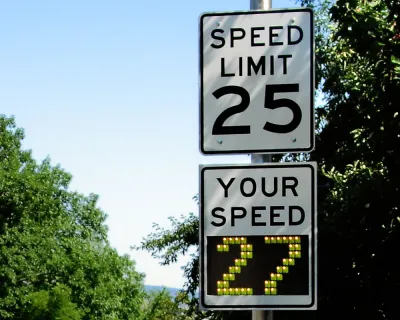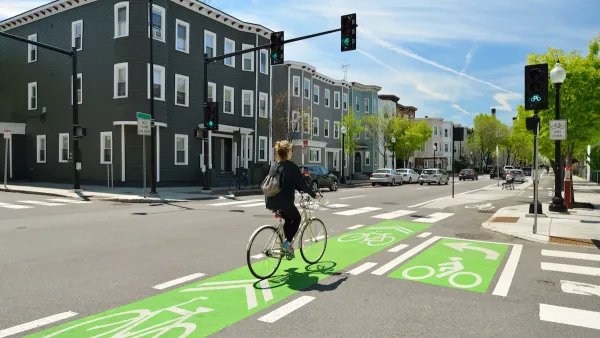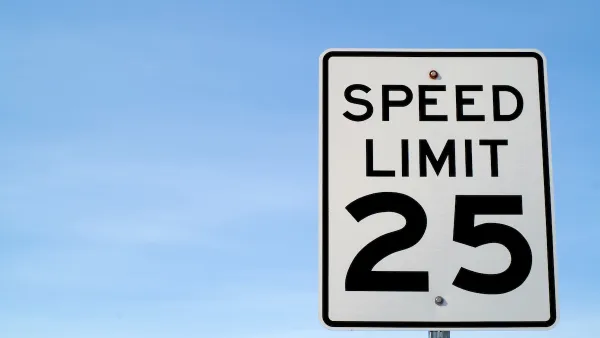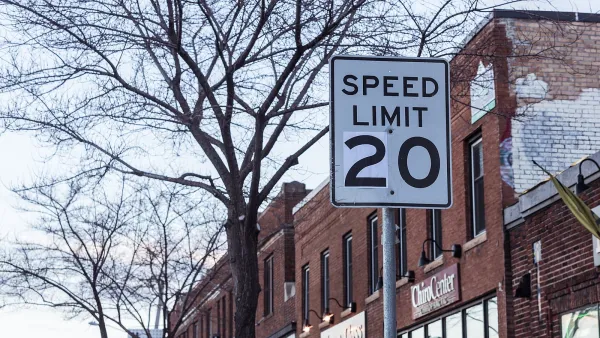Lower speed limits make cities safer, more livable, and, in the long run, more functional.

"The case for a fundamentally slower city has gained traction recently, especially in places where the rise of micromobility, the promise of autonomous vehicles, and the very-much-already-here problem of road congestion have converged, slowing drivers to a furious crawl," writes Andrew Small.
In the past, traffic jams were considered part of urban life, says Small, but drivers began to see speed as a right as cities changed and roads widened. Lately, however, a number of American cities have been moving back to lower speed limits, in response to both safety concerns and the diversifying of the mobility landscape.
"The most obvious immediate benefit to a fundamentally slower city is the safety boost it delivers. Reducing speeds is the best, easiest, and fastest way to quickly radically improve safety, for both drivers and anyone in front of them," says Small.
Technology, and the new modes that it has made possible, is also encouraging slower cities:
The micromobility revolution not only highlights a burgeoning need for more slow lanes: It can vividly illustrate the people-moving power of very modest speeds. When a dude on an electric scooter that rarely goes over 10 mph handily beats a BMW across town at rush hour, it’s easier to see how the scale of cities supports more-but-slower vehicles.
In addition, autonomous vehicles could help usher in a new era of slower-moving city streets. "If we can reconceptualize autonomous vehicles as low-speed machines trundling around downtown rather than interstate-eating robots tasked with making complex split-second driving decisions at highway velocities, everything gets less difficult," notes Small.
FULL STORY: Why Speed Kills Cities

Analysis: Cybertruck Fatality Rate Far Exceeds That of Ford Pinto
The Tesla Cybertruck was recalled seven times last year.

National Parks Layoffs Will Cause Communities to Lose Billions
Thousands of essential park workers were laid off this week, just before the busy spring break season.

Retro-silient?: America’s First “Eco-burb,” The Woodlands Turns 50
A master-planned community north of Houston offers lessons on green infrastructure and resilient design, but falls short of its founder’s lofty affordability and walkability goals.

Test News Post 1
This is a summary

Analysis: Cybertruck Fatality Rate Far Exceeds That of Ford Pinto
The Tesla Cybertruck was recalled seven times last year.

Test News Headline 46
Test for the image on the front page.
Urban Design for Planners 1: Software Tools
This six-course series explores essential urban design concepts using open source software and equips planners with the tools they need to participate fully in the urban design process.
Planning for Universal Design
Learn the tools for implementing Universal Design in planning regulations.
EMC Planning Group, Inc.
Planetizen
Planetizen
Mpact (formerly Rail~Volution)
Great Falls Development Authority, Inc.
HUDs Office of Policy Development and Research
NYU Wagner Graduate School of Public Service




























